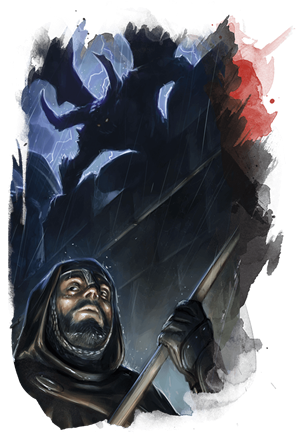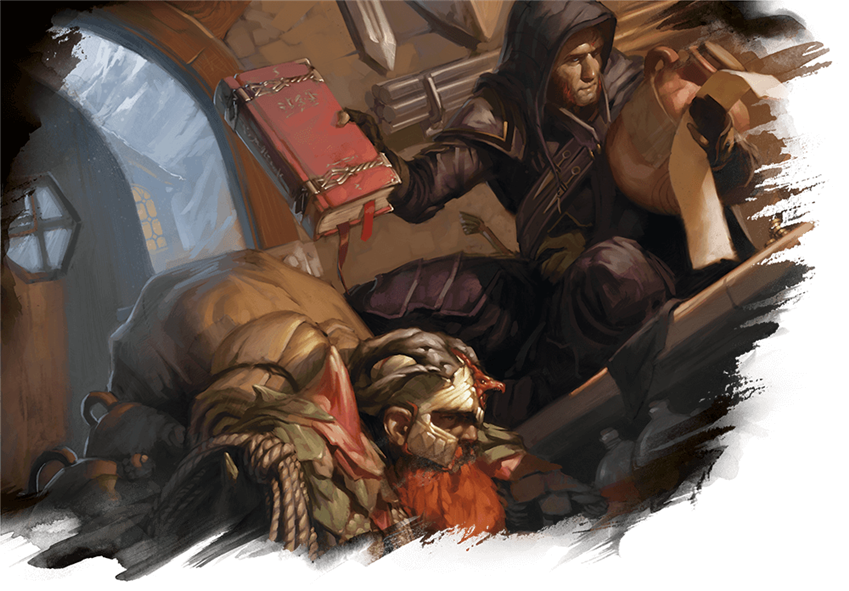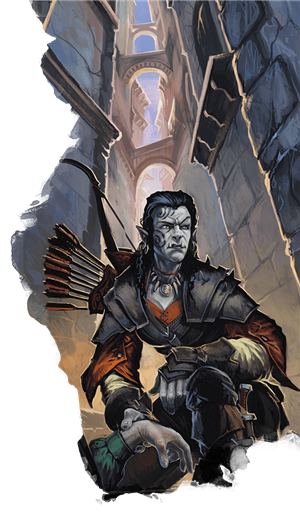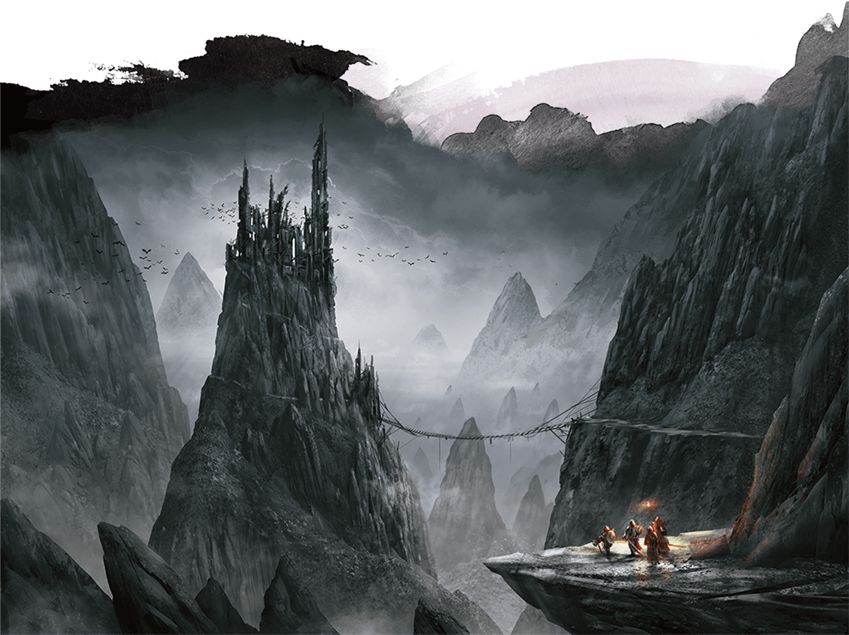 When I was young and foolish, I’d brag about not needing outlines for my writing projects. Outlines were something that other people needed. My “brilliance” could carry me forward without any need for pesky planning!
When I was young and foolish, I’d brag about not needing outlines for my writing projects. Outlines were something that other people needed. My “brilliance” could carry me forward without any need for pesky planning!
Years later, I’m now older (and still foolish)—but I’m less foolish about the power and utility of outlines and planning. The lesson I’ve learned over the years, slowly and often painfully, is that although I wasn’t actively creating outlines before I started writing, I was passively outlining as I wrote, usually at the expense of many drafts of a project—and far too many wasted words. I thought I was saving time by not planning ahead, by not creating an outline, but I actually was wasting so much time haphazardly and inefficiently doing the work of outlining without even realizing I was doing an outline.
Creating D&D adventures is no different from other writing projects in that aspect: an outline is invaluable. In some ways, outlining for D&D adventures is more valuable than for other types of writing, because adventures can look very different from one another based on several design factors. Thinking about those factors early in the process, and then incorporating them into an outline at the start of the project, allows you to process your needs more quickly, increasing your efficiency and opening up your creative brain earlier in the process, rather than focusing on logistics later. In essence, when you know how your adventure needs to function, you can more easily imagine the form.
Form, Let Me Introduce Function
Architect Louis Sullivan famously created the axiom: “form follows function.” Taken at its most basic level, this principle states that the form something takes is inherently informed by that thing’s purpose. Sullivan’s protégé, Frank Lloyd Wright, broadened that philosophy to explain the idea more clearly: “form and function are one.”
High-falutin’ ideas aside, common sense dictates that adventures written for yourself to DM for only your home group in 6 hours will be different than one to be played in two hours at a convention and run by DMs you know, which will itself be designed differently than a 12-hour adventure that you are writing for publication in a hardcover book. Ponder the function, then you are ready to start outlining the form.
As you ponder function, though, think not only about the length, but about the scope of the adventure as well. Does the adventure take place in one general location, a couple, or several? If more than one, what is the distance between the encounter locations? Will travel be involved? Will characters need to provide their own means of travel, and will that travel be dangerous? Or if the whole adventure takes place in just one location, like a dungeon, is this going to be a simple tale of breaking down the door and defeating the evil warlord, or is there going to be a more involved storyline? The scope of the adventure likely influences the length of the adventure, or vice versa. Prepare to adjust the length to be manageable within the scope, or prepare to change the scope to match the length.
Scope is also beholden to the level for which the adventure is designed. High-level, epic adventures that happen all in one place are often problematic, because high-level characters have the tools to perform tasks that low-level characters don’t. Stone dungeon walls rarely impede epic-level characters who have access to spells like stone shape or swords that can cleave a dragon in twain. Where high-level characters are concerned, the adventure’s setting itself often needs to be challenge or pose some sort of threat in order to make the game feel as epic as it should. On the other hand, low-level characters are fragile beings, even in the face of a few marauding goblins, so the environment shouldn’t be a threat as well.

The Usual Suspects
Adventure design has changed with time and evolving game rules, but certain bits of content are included in most adventures. Those standard sections of an adventure, regardless of heading’s exact phrasing, are useful as you put together your outline, focusing your design path:
Introduction
An introduction is generally a very brief description of what the adventure contains, and what parameters the adventure was designed under. The introduction lets the reader know information about the length and scope, where the adventure is set, what the tone of the adventure might be, what character levels the adventure supports, and any other relevant information a DM might want to know in a cursory read of the adventure.
For the adventure I plan to write over the course of this series of articles, this is my working introduction. It can obviously change if my design takes me in a different direction, but I can use it as my guiding star as I start my design:
“Currently Untitled” is a fifth edition D&D adventure for characters of levels 5-7, optimized for level 6. The adventure is meant to be playable in 4 hours, and takes place in a subtropical wilderness. The adventure contains horror elements, with an emphasis on exploration and problem solving.
Adventure Background
Background sections provide the DM with the most basic and important information about what precipitated the conflict that the characters are about to get involved in. Generally, the larger the scope of the adventure, the more extensive the background must be. However, it’s important to keep the background section as short and concise as possible. Background information that’s essential to the DM’s understanding of the forward-moving plot is wonderful. Background information the PCs might learn as they wind their way through the story may be relevant enough to include as well. Anything more, regardless of how creative and powerful it might be, risks drowning the DM in unnecessary details.
It's important to understand that the adventure background may change—and likely will change—as you design the adventure. Better ideas often bubble up as you design, so your outline needn’t polish this background information to a fine sheen. If you know where you want your story to start, that’s good enough for now.
Adventure Synopsis
 The adventure synopsis section provides a high-level overview of what might happen during the adventure. Even if the adventure is non-linear, it’s still important to let the DM know the expected flow of the encounters in an adventure. If there are important connectors between scenes and encounters, make them clear. There is no need to highlight every encounter in detail; just give the DM the basics of what might happen, and in what order.
The adventure synopsis section provides a high-level overview of what might happen during the adventure. Even if the adventure is non-linear, it’s still important to let the DM know the expected flow of the encounters in an adventure. If there are important connectors between scenes and encounters, make them clear. There is no need to highlight every encounter in detail; just give the DM the basics of what might happen, and in what order.
For the purpose of outlining, don’t bother with this section yet. As you jot down your ideas for scenes and encounters (see below), the adventure synopsis takes shape on its own. After you have designed the encounters, you can come back and write the synopsis. Waiting to write the synopsis until the end also helps you ensure that the adventure flow makes sense post-design, as you take one more pass through the encounters you have written.
Cast of Characters
If you are writing an adventure with more than a couple NPCs, it is wise to include a cast of characters. This gives DMs a way to quickly digest the NPCs they need to bring to life for their players. A pronunciation guide is helpful for those hard-to-read names. As with the adventure synopsis, this section doesn’t need to be included in your outline, although adding the NPCs to it as you go is useful, giving you an easy reference as you write.
Encounters/Parts/Scenes/Acts
Whatever you want to call them, these comprise the beating heart of your adventure. Many designers have a tendency, understandably so, to want to fully design here rather than outline. Perhaps, if you don’t have many parameters that you are designing for, you can do that. However, if you do have strictures on your play time and adventure scope, outlining first is important.
In the case of the adventure we’re going to create together, let’s set some guidelines. We need it to be playable in 4 hours, because we’re going to design it for a standard convention slot. (Designing adventures for organized play campaigns also brings this limitation to your design.) This means I need to be very deliberate in the number of encounters, where they take place, and how much time each should take to resolve at the table. (If you are writing an adventure for a home group with no time limit, you might not need to do this, but it is good practice to set some limits anyway to focus your design. You can always remove the limits if necessary.)
We’ll discuss the design of encounters—and the use of the three pillars of play in D&D—in later articles, so for now I’ll just leave you with this: use your outlining time to get the general flow of your encounters, and stay attuned not only to what happens during the adventure, but how it happens. You probably want to vary the types of encounters to make sure that you don’t leave the DM trying to run the same type of encounter (combat, roleplaying, exploration, puzzles, etc.) over and over and over again.
To put this even more succinctly: where are the characters at the start of the adventure, where should they be at the end of the adventure, and what are some of the steps they might take on their journey from beginning to end. In our case, where we need to fill 4 hours. We can assume about 5-8 encounters within the understanding that some encounters might be skipped, or some encounters might be fairly short roleplaying or exploration encounters.
Handouts, Maps, and Appendices
As you envision DMs running your adventure, consider what might be helpful or fun if it was represented visually in a handout for the players. Puzzles that have moving pieces or that are highly detailed can benefit from a handout. More importantly, providing handouts of letters or journals or other things the characters find can deepen the player’s experience, and also take some of the workload off the DM.
Do any of your encounters contain elements better represented in a map rather than strictly described in the text? Most DMs and players appreciate maps, especially in areas with dungeons or other complex encounter areas.
Any information that could be of use to the DM, but is not meant to be seen by the players, can be included in an appendix. Deciphered answer keys for puzzles can help DMs who might otherwise not understand a solution described in text. If you use a lot of complicated and important NPCs in the adventure, an appendix with their information on a single page can be a game-saver for the DM.

Outlines for Large or Complex Works
What I have been describing is how I outline relatively simple adventures that can be run in a session or two. But what about outlines for longer or more complex adventures that might have many chapters, or art asset components that must be described, created, reviewed, and then figured into the layout, or a specific page count that you must design to?
If you are working on this level, it is best to employ a spreadsheet to track your design needs on a page-by-page basis. I’ll talk more about these concepts in an article toward the end of this series, and I’ll call upon expertise from project managers, producers, and layout experts for more relevant advice.
When is an Outline Complete?
When I’ve talked to people in person or online about adventure design outlines, I always get the question: “when do I know my outline is done?” My best answer to that is, “your outline is never done, but at some point, you have to start writing.” I personally stop working in outline form when I have answered the basic design questions of the adventure to the best of my ability, and I could start writing any part of the adventure and feel comfortable doing so. And no matter where I start writing, I proceed with the understanding that as I write that part, it will likely change something elsewhere in my outline. That means I am constantly going back to the outline and updating something that has changed elsewhere. This way, I don’t forget about the changes I have made, and I can keep the design tighter than if I was writing without the outline.
In much of the adventure design I do, I find myself writing in a way that I call “front to back to front.” Using my outline, I start with the first encounter or scene and write forward for as long as I can keep my momentum. If I hit a point where I don’t quite know what do to next, even with the outline in front of me, because something feels different, then I start “writing backward.” I look at what I wrote already, and I make changes based on where I ended up. Note that this is not an edit; this is reading and rewriting to make sure that where I have been matches where I am heading. Normally before I even get all the way back to the front, I am seeing where I should go next, so I continue.
If I am lucky, I get all the way to the end with a first draft before I lose momentum, so my “back to front” rewrite of the adventure can literally take me from the end all the way back to the beginning. If I have gotten off track in terms of theme or story beats, I can see the flow and figure out where that happened. If my transitions between scenes or encounters are weak and could be strengthened, I can see that.
But always in the background, ready to help me out and remind me of what I wanted to do when I started this process, is that outline. It’s the touchstone that can help focus a brain that wants to play in the playground of infinite possibility. And if the outline needs to change because one of the swings in the playground is so much better than the swing I’m currently on, that’s OK too. But I must remember to change the outline before changing the adventure, because I need my guide.
Next Time
In the next article, we’ll look at creating plot hooks and opening scenes for adventures. How many plot hooks are too many? What is the best way to start an adventure? How can you leverage parts of D&D to make the best opening possible? What are some common adventure design pitfalls with regards to opening scenes?
Have you ever outlined an adventure, or even run an adventure entirely from an outline? Let us know in the comments.
 Shawn Merwin's professional design, development, and editing work in D&D has spanned 20 years and over 4 million words of content, ranging from third to fifth edition. His most recent credits include the Acquisitions Incorporated book, Baldur’s Gate: Descent into Avernus, and Storm Lord’s Wrath. He is also the Resource Manager for the D&D Adventurers League’s Eberron: Oracle of War campaign. Shawn hosts a weekly D&D podcast called Down with D&D, and he holds an MFA in Creative Writing from Vermont College of Fine Arts. You can follow his ramblings and musing on Twitter at @shawnmerwin.
Shawn Merwin's professional design, development, and editing work in D&D has spanned 20 years and over 4 million words of content, ranging from third to fifth edition. His most recent credits include the Acquisitions Incorporated book, Baldur’s Gate: Descent into Avernus, and Storm Lord’s Wrath. He is also the Resource Manager for the D&D Adventurers League’s Eberron: Oracle of War campaign. Shawn hosts a weekly D&D podcast called Down with D&D, and he holds an MFA in Creative Writing from Vermont College of Fine Arts. You can follow his ramblings and musing on Twitter at @shawnmerwin.
Want to read more of this series? Click on the "Let's Design an Adventure!" tag to see the full series.








-
View User Profile
-
Send Message
Posted Oct 9, 2019Amazing article! Looking foward to reading the next one.
-
View User Profile
-
Send Message
Posted Oct 9, 2019Given the reference to beating heart and beats along with references to flow and momentum, how regularly in tempo should story beats be planned? (Execution of plans is a different matter altogether. I'm only considering the raw outline of the plan at this moment.)
-
View User Profile
-
Send Message
Posted Oct 9, 2019This is all great advice, and I relate a lot to your ideas of development and your description of how you started out versus where you've ended up. I used to think I didn't need outlines, and maybe that was technically true; they weren't critical, the game could be run without them. But I feel like I've grown a lot as a writer and designer since I started deliberately creating one to preface my process, since (as you say) I was already doing it, anyway...just without realizing I was putting in five times the work.
Good article! I'm excited to see more of this series.
-
View User Profile
-
Send Message
Posted Oct 9, 2019Good stuff. Take an Inspiration point.
-
View User Profile
-
Send Message
Posted Oct 9, 2019Awesome! I'm loving this already!
-
View User Profile
-
Send Message
Posted Oct 9, 2019This is amazing! Loving the articles, keep up the good work. I'm very sure that this knowledge will all come in handy, and I'm very excited for the next chapter as one of my friends is stuck there right now
-
View User Profile
-
Send Message
Posted Oct 9, 2019Great Writing.
-
View User Profile
-
Send Message
Posted Oct 10, 2019Five times the work without even realizing i was doing it... that one hit home. Time to approach my writeups differently.
Thank you for the epiphany, i hope i am in a more focused direction now and i have you to thank for the turning point.
-
View User Profile
-
Send Message
Posted Oct 10, 2019Two things.
First, it would be useful to see the end product of these principles and ideas, like a couple of examples.
Second, I think the cultural context of where you and your players are from is important. I had a discussion with other DM's from Denmark, and very few Danes would plan an adventure like this, because in Denmark, it's ok to develop things as you go, involve your players more, and let the adventure develop based upon their actions and reactions. I think some DM's, that are not american perhaps, struggle with this culture of having to have the answer for everything, having everything planned in advance, and not making errors as a DM. I think this is an important point to make, because some DM's might just give up before getting started creating fancy prep that they are never gonna use due to their cultural context with their friends as players :)
I know this is an american website, but still.
-
View User Profile
-
Send Message
Posted Oct 10, 2019What you are talking about is not a Danish phenomenon. Many American DMs (and others I know from all over the world) run their games with a more improvisational style. And that is perfectly fine. But I am focusing in my articles on a more formal style of adventure design, with an eye toward creating adventures that you might want to publish, so you have no idea who your players might be and what their desires might be. I hope that improvisational DMs can still take some pointers from these articles, but I am definitely not focused in that direction.
-
View User Profile
-
Send Message
Posted Oct 10, 2019Hell Yeah! Now Im gonna have to make myself an awesome adventure and get a group together.
-
View User Profile
-
Send Message
Posted Oct 10, 2019Interesting article. While I would agree outlines are a very useful approach to writing modules, it is not going to help the problem of PC's going off story track, the longer and more complicated a module is.
I have noticed a distinct shift in the modules coming from WOTC. Descent into Avernus is a wonderful example. [Warning some spoilers] Being an adventure designed to progress PC's from level 1 to level 11, and transitioning across five major chapters (particularly chapter 3: Avernus, which could of used some sub-division), you have a choice as a module author/DM. Do I try to continuously branch out the major possibilities a party might go within the frame of the story, perhaps expecting the DM running things to ad hoc the elements I didn't write about; vs. railroading the story and removing player agency (which is one of my disappointments with Descent into Avernus).
Outlines start to fail when you write too far ahead of the decisions of the PC's, unless you're choosing to force the story upon them. To continue the example of DiA (Descent into Avernus), what should a DM do if the party decides instead to help Zariel complete the consumption of Elturel into the river Styx? Your module has no backstop for such a decision.
For writing longer modules, there comes a point when you need to switch from Outline to something more like a Basean flow-chart (see https://en.wikipedia.org/wiki/Bayesian_probability). Writing such a module still comes with the difficulty of requiring more possible solutions or work-arounds, the longer the story goes. Even following the new AL guidelines of a level gained for every 2 hours of table play, we're talking 11 sessions (22 hours) for a party to achieve level 11 and be near the end of the module. The number of decisions a party can make, which can throw the story completely off the written rails, increases with every session.
SnobgoblinEU made the observation that in their experience it's better to evolve the story as the party progresses. Authors such as Michael Shae (Sly Flourish) and others have made the point of DM's falling into the trap of writing too far ahead, and the frustrations that can come when the party doesn't follow the DM's carefully planned-out story, and/or the material they feel they have to throw away as the party isn't going to use it (which can be reduced by recycling material, but that's another thread).
Instead of using outline for all modules, my advice is limit how far you expect a module to progress a group. Keep a limit on how many sessions a module is going to progress a party. And if WOTC is interested in feedback, I think your modules are too long, too complex, and are suffering more and more from the strong arm of story railroading - DiA being the biggest example of this in recent memory. It's got tons of great stuff in it, but it falls apart when the party makes decisions that don't fit the carefully scripted storyline - and in that context, it does not serve me well as a DM.
(note: edited for spelling)
-
View User Profile
-
Send Message
Posted Oct 10, 2019Being a lazy designer, I appreciate anything that makes being a DM easier, so I greatly appreciate this article as I think not outlining has been slowing things down.
However, one line you wrote confused me:
"...handouts of letters or journals or other things the characters find can deepen the player’s experience, and also take some of the workload off the DM."
Since handouts need to be designed and physically found or manufactured, how does this lessen the DMs workload?
-
View User Profile
-
Send Message
Posted Oct 10, 2019This was a great read. Thank you.
-
View User Profile
-
Send Message
Posted Oct 10, 2019Good read. thank you
-
View User Profile
-
Send Message
Posted Oct 10, 2019I think what Shawn is proposing is that if you're writing adventures where someone other than yourself would could be DMing, you can provide them with the "...handouts of letters or journals or other things the characters find can deepen the player’s experience" so they as the DM don't have to do it. It's front loading the effort onto the Writer, when that person may or may not be the DM.
-
View User Profile
-
Send Message
Posted Oct 11, 2019This is very helpful for me, I'm hoping to make an adventure for my brother and his friends and they want something on the scale of Critical Role, If you have any personal tips for a starter?
-
View User Profile
-
Send Message
Posted Oct 11, 2019That's fair, just wanted to give that perspective as well :)
-
View User Profile
-
Send Message
Posted Oct 11, 2019I can't wait to read the next installment. I am actually starting to write a 1-1 Homebrew right now. This series will definitely help me out with writing my campaign.
It would be interesting to know what resources or tools you use Shawn when creating your outline. Are you using a traditional paper outline or digital technology (I.e. MS Word or some other program.)
My favorite digital product right now for writing posts for my business website and another blog I run is Mindmapper. I do use Word as well as paper because I like the old school feel of paper. The only thing that fails when it comes to paper is either pencil lead or ink and a full notebook.
Again, stoked to see the next article in the series.
-
View User Profile
-
Send Message
Posted Oct 11, 2019This article is focused on publishing adventures, so while it may not be easier for you, it will make the DM who buys its workload less.